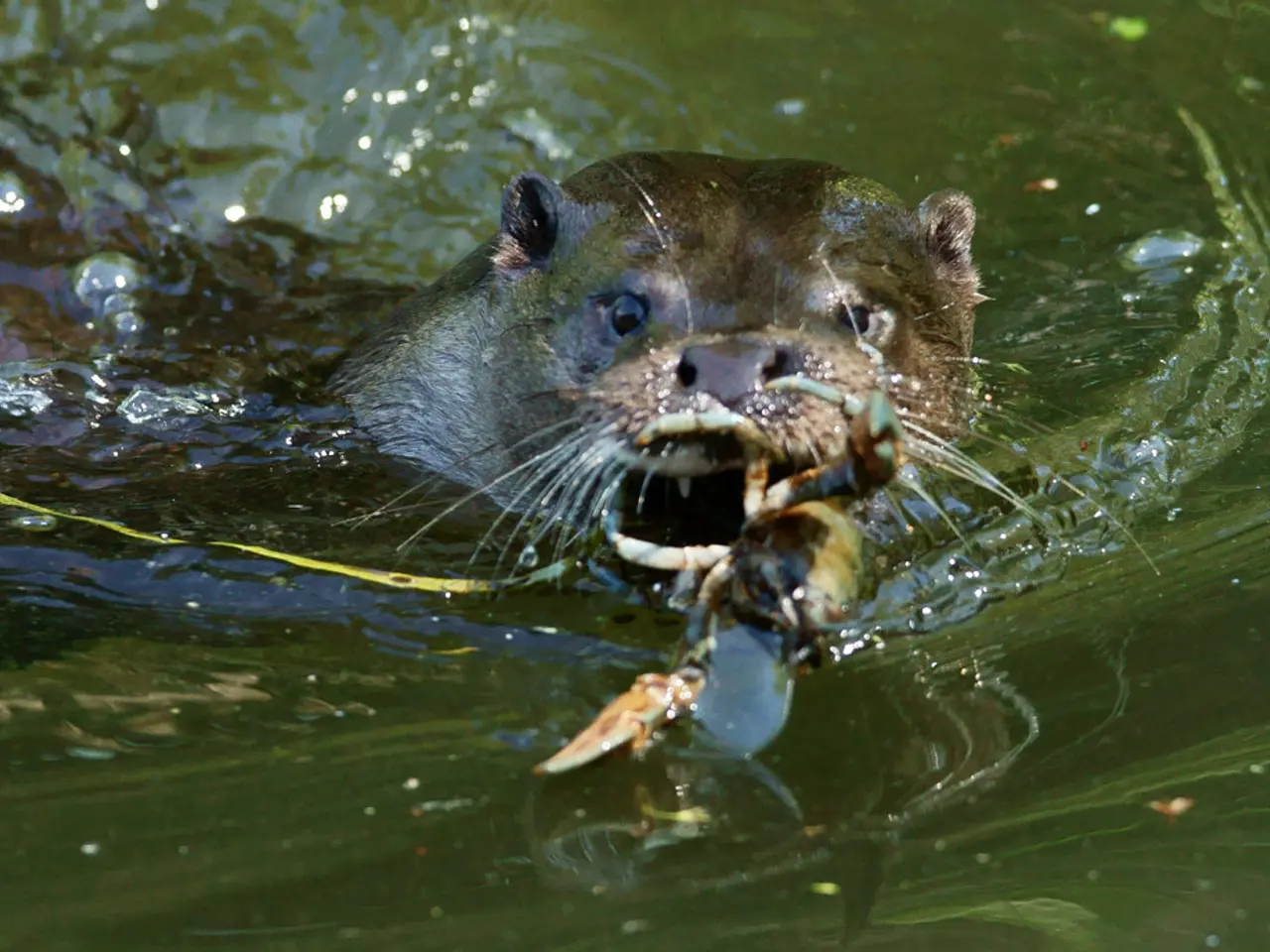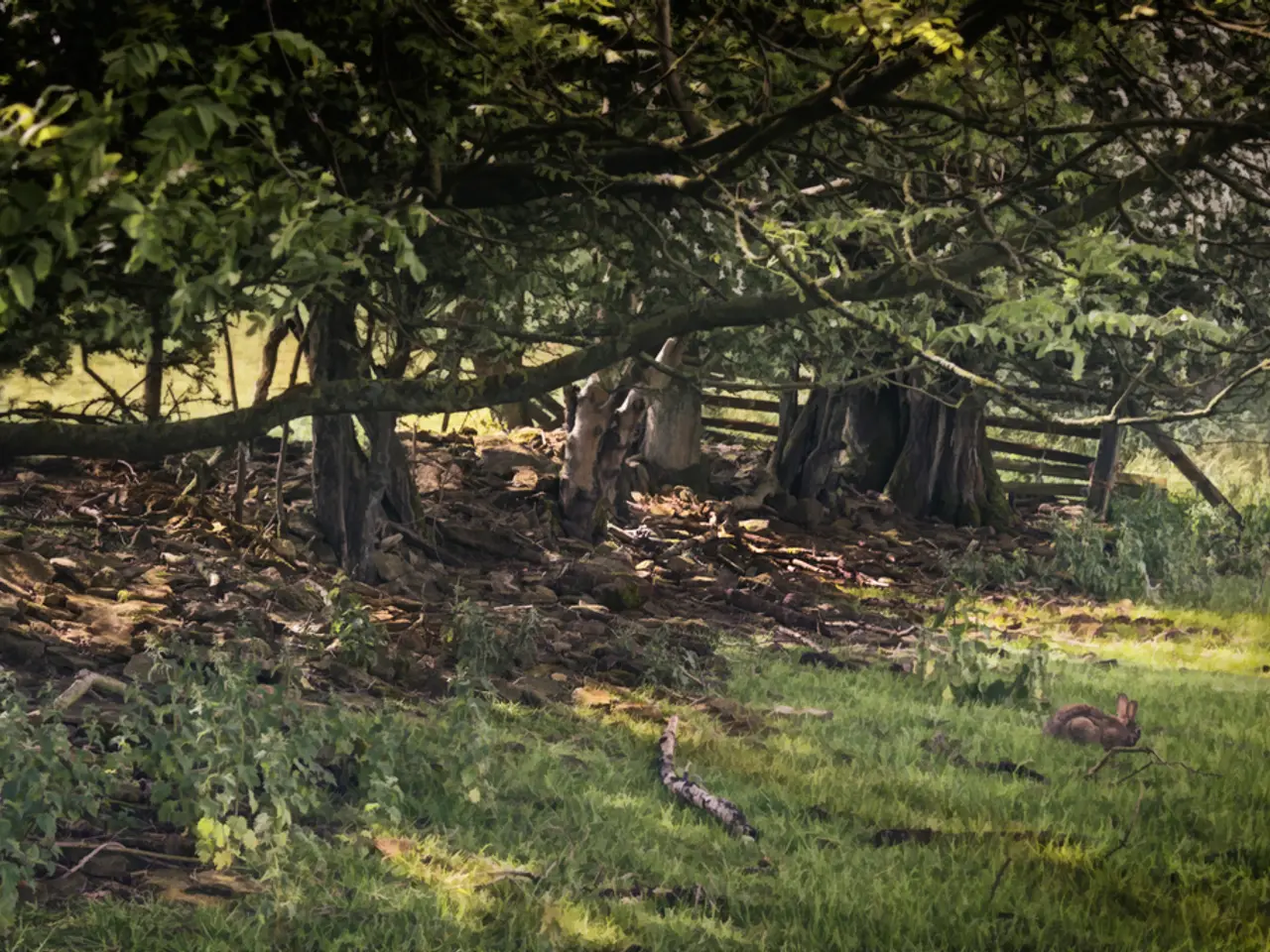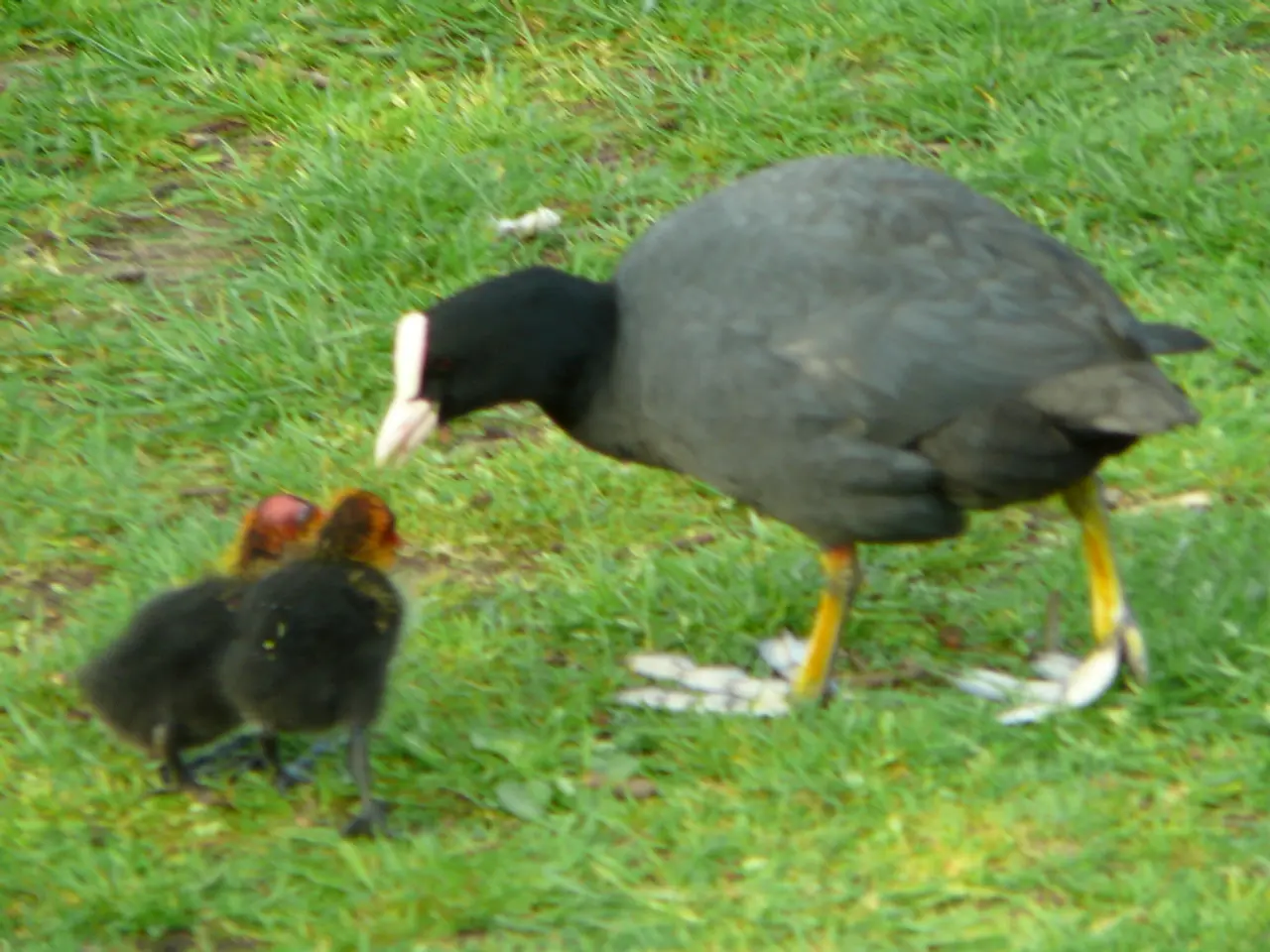"Cartoonish Nature of Vampire Crab Outweighs Its Legendary Blood-drinking Reputation"
In the fascinating world of invertebrates, vampire crabs have captured the hearts of many enthusiasts. These unique creatures, known for their striking purple bodies and bright yellow or orange eyes, require a specific environment to thrive. Here's a guide on setting up and maintaining a vampire crab paludarium.
**Tank Requirements**
A vampire crab paludarium is a terrarium that combines both land and water areas. For a 5-gallon tank, you should accommodate three vampire crabs, with larger tanks being recommended for more crabs. The water-to-land ratio should be around 25% water and 75% land.
The land portion of the tank should have sand or non-compacted organic soil as substrate, along with plenty of plants, rocks, and wood for hiding and climbing. The water section should have water that is 2-4 inches deep, with aquarium sand or gravel substrate and multiple ramps or structures to enable crabs to easily climb out of the water.
Maintain the temperature between 71-82°F (22-28°C) for the land area and 71-78°F (22-26°C) for the water. Humidity should be kept high, around 75% and above for the land part. The water parameters should be pH 7.5 to 8.0, alkalinity 120-300ppm, total hardness 120-300ppm, ammonia, nitrites, and chlorine levels at 0, nitrates less than 20ppm, and 0 ppb of chlorine if using tap water. A gentle filtration system is recommended as crabs are sensitive to water quality.
**Diet**
Vampire crabs are omnivorous and opportunistic feeders. Their diet should be based on a variety of protein sources like bloodworms, brine shrimp, insect larvae, and commercial sinking pellets or algae wafers. Supplement their diet with blanched vegetables such as zucchini or lettuce, and provide calcium supplements or shellfish to aid in shell development and molting recovery.
**Social Behavior and Tankmates**
Vampire crabs are predatory and intolerant of other similar crab species. It's best to keep them in small groups or pairs of their own kind to avoid aggression. A bioactive setup with isopods and springtails, which help maintain substrate health and serve as a natural cleanup crew, is preferred.
Peaceful and calm aquatic species that won't threaten or compete aggressively with the crabs are ideal tankmates. Consider peaceful fish species compatible with similar water parameters and able to coexist in a paludarium environment, avoiding large or aggressive fish.
**Maintenance Tips**
Regularly monitor water quality, especially ammonia, nitrites, and nitrates. Maintain humidity and temperature within recommended ranges. Clean the tank appropriately without disturbing the crabs too much or removing beneficial organisms. Feed a varied diet to ensure nutritional balance and shell health.
By following these guidelines, you can create a comfortable, healthy, and visually appealing paludarium for vampire crabs that supports their unique needs for both land and water environments.
- In the realm of unique pets, vampire crabs are a popular choice due to their distinctive appearance and specific environmental requirements. Their living space, a paludarium, merges home-and-garden elements with technology, like a gentle filtration system, to ensure optimal water quality.
- Beyond pets and invertebrates, vampire crabs' lifestyle also intersects with space and lifestyle, as owners must maintain a precise temperature range and high humidity levels to mirrored Earth's conditions, creating an otherworldly environment within their home.




